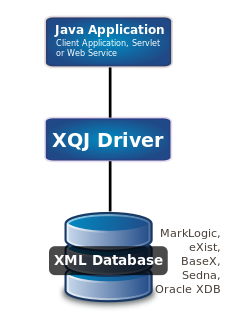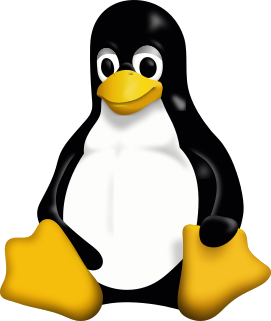
A database is an organized collection of data, generally stored and accessed electronically from a computer system. Where databases are more complex they are often developed using formal design and modeling techniques.

Microsoft Access is a database management system (DBMS) from Microsoft that combines the relational Microsoft Jet Database Engine with a graphical user interface and software-development tools. It is a member of the Microsoft Office suite of applications, included in the Professional and higher editions or sold separately.

An object database is a database management system in which information is represented in the form of objects as used in object-oriented programming. Object databases are different from relational databases which are table-oriented. Object-relational databases are a hybrid of both approaches.
In computer science, in the context of data storage, serialization is the process of translating data structures or object state into a format that can be stored or transmitted and reconstructed later. When the resulting series of bits is reread according to the serialization format, it can be used to create a semantically identical clone of the original object. For many complex objects, such as those that make extensive use of references, this process is not straightforward. Serialization of object-oriented objects does not include any of their associated methods with which they were previously linked.
Object-relational mapping in computer science is a programming technique for converting data between incompatible type systems using object-oriented programming languages. This creates, in effect, a "virtual object database" that can be used from within the programming language. There are both free and commercial packages available that perform object-relational mapping, although some programmers opt to construct their own ORM tools.
In computing, the Perl DBI offers a standardized way for programmers using the Perl programming language to embed database communication within their programs. The latest DBI module for Perl from CPAN can run on a range of operating systems.
Query languages or data query languages (DQLs) are computer languages used to make queries in databases and information systems.
Dataphor is an open-source truly-relational database management system (RDBMS) and its accompanying user interface technologies, which together are designed to provide highly declarative software application development. The Dataphor Server has its own storage engine or it can be a virtual, or federated, DBMS, meaning that it can utilize other database engines for storage.
eXist-db is an open source software project for NoSQL databases built on XML technology. It is classified as both a NoSQL document-oriented database system and a native XML database. Unlike most relational database management systems (RDBMS) and NoSQL databases, eXist-db provides XQuery and XSLT as its query and application programming languages.

LAMP is an archetypal model of web service stacks, named as an acronym of the names of its original four open-source components: the Linux operating system, the Apache HTTP Server, the MySQL relational database management system (RDBMS), and the PHP programming language. The LAMP components are largely interchangeable and not limited to the original selection. As a solution stack, LAMP is suitable for building dynamic web sites and web applications.
Entity–attribute–value model (EAV) is a data model to encode, in a space-efficient manner, entities where the number of attributes that can be used to describe them is potentially vast, but the number that will actually apply to a given entity is relatively modest. Such entities correspond to the mathematical notion of a sparse matrix.

PMB is a fully featured open source integrated library system. It is continuously developed and maintained by the French company PMB Services.

SPIP is a free software content management system designed for web site publishing, oriented towards online collaborative editing.
Database preservation usually involves converting the information stored in a database to a form likely to be accessible in the long term as technology changes, without losing the initial characteristics of the data.
openTMS is an Acronym for Open Source Translation Management System.
papaya CMS is an open-source content management system, free of charge and complying with open standards like XML as data format, XSLT as templating language, and PHP for programming.
A database application is a computer program whose primary purpose is entering and retrieving information from a computerized database. Early examples of database applications were accounting systems and airline reservations systems, such as SABRE, developed starting in 1957.

XQuery API for Java (XQJ) refers to the common Java API for the W3C XQuery 1.0 specification.
The following outline is provided as an overview of and topical guide to MySQL:












